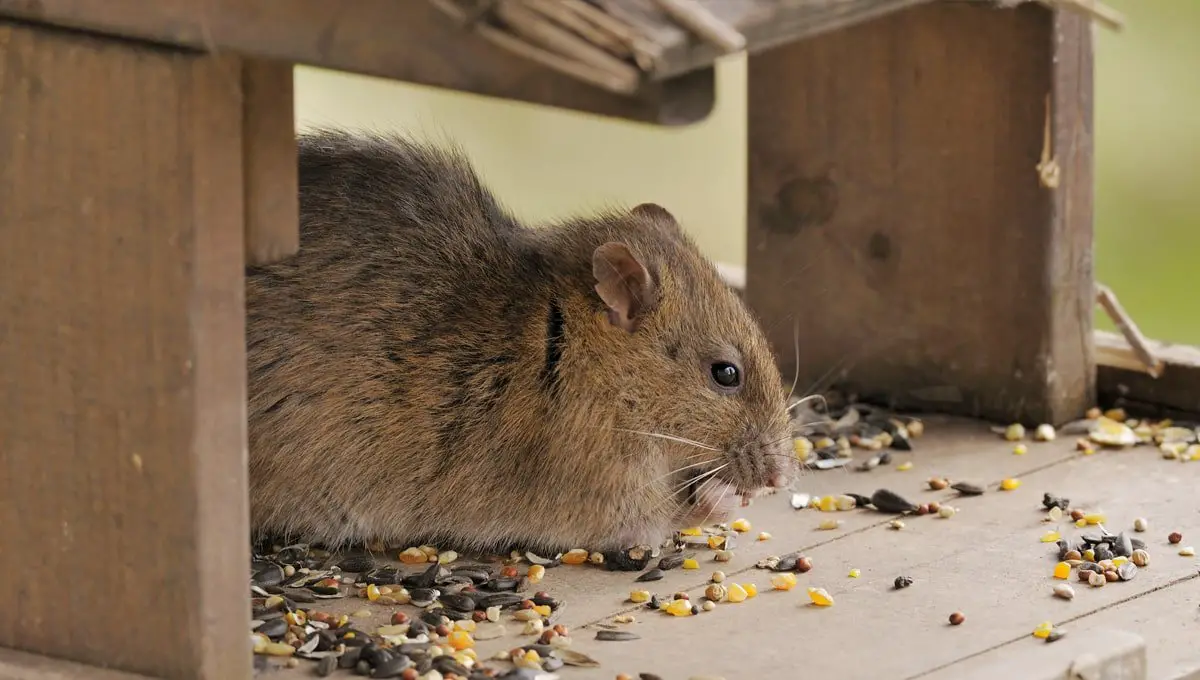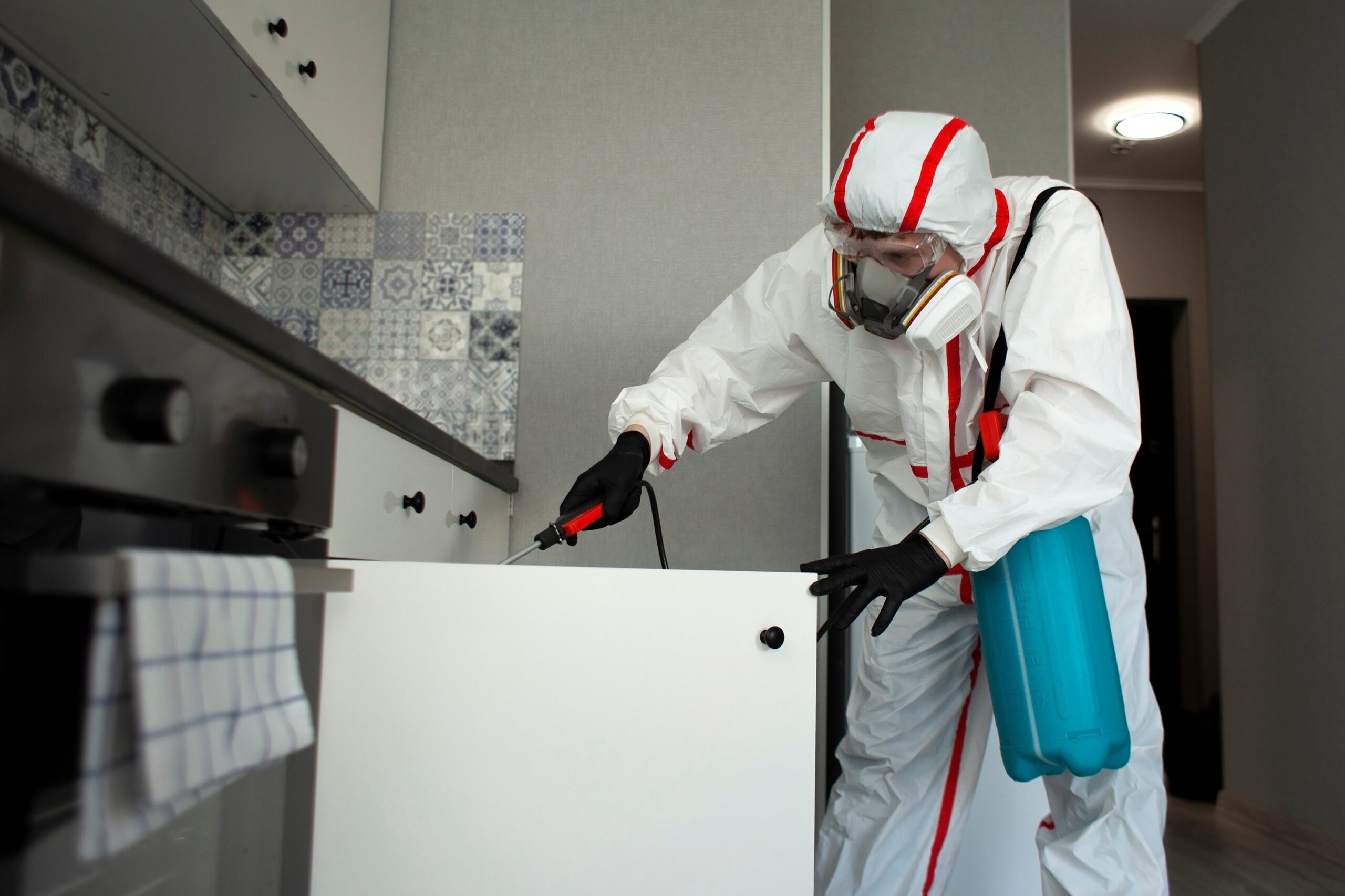Warning: Attempt to read property "nodeValue" on null in /home/dkfhosti/bestratpoisons.com/wp-content/plugins/internal-linking-related-contents-pro/core/includes/class-related-contents.php on line 217
Just as you were enjoying the peace and quiet of your home, the faint yet unmistakable sound of scurrying and scratching in the walls disrupts your tranquility. It’s a sound you’d rather not know, but there’s a strong chance you’re dealing with rats in your walls.
Don’t panic, though. You’re about to embark on a journey that will empower you with the knowledge and techniques to reclaim your home. As we dive into this topic, you’ll learn how to identify signs of rat infestation, understand their habits, and apply the most effective strategies to eliminate them.
Who knew a quiet evening could lead to such an unexpected adventure? Let’s get started.
Understanding Signs of Mouse Infestation
Recognizing the tell-tale signs of a mouse infestation is your first step in preventing further damage and potential health risks to your home. Mice, being nocturnal creatures, are often active at night, but their presence isn’t always indicated by noise. Instead, look for droppings, smudge marks, footprints, tail marks, and damaged food packaging or furniture.
Mice can go unnoticed for a long time, but early detection allows you to act promptly. Spotting the signs of an infestation isn’t just about knowing what to look for, but understanding why it’s important. You can’t choose the right measures to get rid of them if you don’t know what you’re dealing with.
When it comes to sealing entry points, focus on areas where pipes enter the building, and the basement foundation. Mice can fit through small holes or gnaw to make them larger, so use silicone sealants to caulk openings and screen vents with fine mesh. Prevention is key, as this is your best chance for long-term control over these pests.
Guide to Trapping Mice in Walls
To successfully trap mice in your walls, you must first locate the area where their activity is most concentrated, ensuring that no wires or pipes are present. Look for signs such as smudge marks or droppings. This task may require some patience, but it’s vital for effective trapping.
Next, you’ll need to choose your trap. There are many types available, but snap traps are often the most effective for wall infestations. Bait these with enticing foods like peanut butter or soft cheese. The scent should draw the mice out from their hiding spots.
Now, set up your trap. It should be placed directly in the path you believe the mice are using. Check it regularly, ideally every morning and evening. Remember that mice are nocturnal, so overnight is the prime time for catching them.
Once you’ve trapped a mouse, dispose of it safely and promptly. Be sure to wear gloves to protect yourself from potential diseases. Then reset your trap. It’s likely there’s more than one mouse in your walls, so don’t stop trapping until you’ve had a few days without any new catches.
Lastly, take preventative measures to stop a new infestation. Seal any potential entry points with caulk or steel wool to keep mice out. Remember, prevention is always better than cure.
Strategies for Sealing Mouse Entry Points
After dealing with the immediate problem of mice in your walls, you’ll want to turn your attention to sealing potential entry points to prevent further infestations.
Start by inspecting your home thoroughly, paying close attention to areas where pipes enter the building and the lower regions of your basement foundation. Remember, mice are adept at squeezing through the smallest of openings or gnawing holes larger, so don’t overlook even the tiniest gaps.
To seal these entry points, use a silicone sealant or caulk to fill any openings you find. For larger gaps or vents, consider using a fine mesh screen to prevent mice from getting through. It’s essential to seal all possible entry points, not just the ones you think mice are currently using.
Additionally, be diligent in your efforts. Mice are persistent creatures and may find new ways in if you’re not thorough. Regularly re-inspect your home and reseal any new openings you find.
You’ll find that these preventative measures are key to achieving long-term mouse control in your home.
Exploring Different Types of Mouse Traps
Diving into the world of mouse traps, you’ll find a variety of types, each with its own strengths and weaknesses, that can effectively address your mouse infestation problem. These traps range from traditional snap traps to more technologically advanced electric traps.
Snap traps, the most common type, use a spring-loaded bar to kill the mouse instantly. They’re cheap and easy to use, but can be messy.
Live catch traps, in contrast, are humane options that allow you to capture and release the mouse outside your property. They’re safe to use around kids and pets, but you’ll need to check them frequently.
Glue traps are a bit controversial due to the distress they cause to the mice. They’re simple sticky boards that trap the mouse, leading to a slow death.
On the other hand, electric traps are considered the most humane. They kill mice instantly with a high-voltage shock. They’re a bit pricier, but they’re clean, easy to use, and effective.
Expert Advice on Effective Mouse Trapping
When it comes to effective mouse trapping, experts’ advice can be invaluable in ensuring successful eradication of these pests from your home. Firstly, you must identify the signs of a mouse infestation such as droppings, damaged food packaging, and furniture.
Once you’ve recognized an infestation, it’s crucial to act swiftly. Locate the active area, ensuring no wires or pipes are present, then drill a hole to place a trap. Be prepared for a mouse to run out, but once trapped, you can easily remove and seal the hole with duct tape.
Preventing further infestations is vital. Inspect your home for entry points and seal them, paying particular attention to areas around pipes and the basement foundation. Use silicone sealants and fine mesh to secure these points.
Choosing the right trap and bait is essential. Experts recommend electric traps for their effectiveness and cleanliness. Foods such as peanut butter, grains, and soft cheese make good bait.
Steps for Efficient Mouse Control
To effectively control a mouse infestation, it’s crucial to follow a systematic approach. This includes early detection, strategic trapping, prevention of future entry, and selection of the right bait and trap type.
Early detection involves looking for telltale signs such as droppings, smudge marks, gnawed holes, and damaged food packaging. Once you’ve identified an infestation, it’s time to strategize your trapping. Position your traps in areas where you’ve noticed signs of activity.
Prevention of future entry is equally important. Inspect your home for possible entry points like openings where pipes enter the building or cracks in the foundation. Seal these points with a silicone-based sealant and screen your vents with a fine mesh to block entry.
The choice of bait and trap type can greatly influence your success rate. Bait your traps with foods that are appealing to mice, like peanut butter or grains. Regarding trap type, electric traps are highly recommended for their effectiveness and humane approach. The Victor M250S No Touch, No See Upgraded Indoor Electronic Mouse Trap is a good option.
Conclusion
In conclusion, dealing with rats in your walls isn’t a walk in the park, but it’s entirely manageable.
Knowledge is your best weapon. By identifying signs of infestation, utilizing effective trapping methods, sealing entry points, and selecting the right traps, you can restore peace in your home.
Remember, trapping is often better than poisoning, especially for small infestations. So, arm yourself with these strategies and let’s bid farewell to your uninvited guests.



